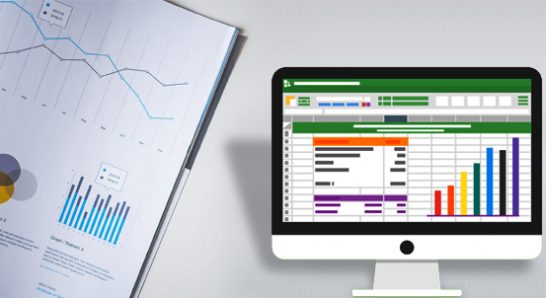Did you know that data can open up countless opportunities for your business to thrive?
In today’s fast-paced digital landscape, data analytics is not just a buzzword, it’s a crucial tool for driving business value.
But what is the role of data analytics?
It’s more than just having access to data. It’s about empowering your business and ensure sustainability with the right information, tools, and resources to analyze data and extract meaningful insights.
According to recent reports, 73.5% of respondents in data-leading companies across the globe reported that their decision-making processes were always data-driven.
This statistic underscores the importance of embracing data analytics as a driving force behind a business’s success.
So, are you ready to unlock the full potential of your data? Read on!
How can data analytics contribute to business value?
Let’s break down 8 practical ways data analytics can add value to your business:
- Business Goal Alignment
- Productivity Enhancement
- Problem-Solving
- Better Data Management
- Faster Communication
- Growth Opportunities
- Data Monetization
- Personalization
Dive into the advantages and learn strategies to attain them:
- Setting Clear Goals: Measuring Success with KPIs
Data analytics has revolutionized every facet of business and key performance indicators (KPIs) are no exception. In the past, KPIs mainly focused on sales and revenue metrics, but now they encompass a wider range of factors in your business, like clicks, customer visits, average user session duration, lead conversion rates, and more.
The emergence of Artificial Intelligence (AI) models has introduced new KPIs tailored to measure the performance of these models specifically. These analytical measurements align with your business objectives rather than relying on standard metrics to achieve desired outcomes. Some data analytics business growth examples are shared for your reference.
For instance, Amazon utilizes metrics like Weighted Absolute Percentage Error (WAPE) to gauge the accuracy of forecasts compared to the actual outcomes for a given sample. This use of data analytics ensures that KPIs are finely tuned to reflect the real-world impact and effectiveness of business strategies and AI technologies.
- Enhance Productivity
Data analytics is your strategy for making smarter decisions. By diving into the data, leaders can craft strategies backed by solid evidence, really understand their customers to fine-tune marketing efforts, and, ultimately, boost productivity.
Analyzing big data analytics market can help you spot trends and patterns. With that knowledge in hand, you can tailor your products or services to meet exactly what your customers are looking for. And the more you know about your customers, the better you can build loyalty andramp up sales.
So, data analytics isn’t just about numbers; it’s about knowing your customers inside and out and using that knowledge to fuel your business growth.
- Reduce Problems
Data analytics can assist in minimizing business challenges. With analytics, you understand exactly who your customers are and what they want, making your marketing efforts effective.
It helps in customer segmentationby sorting your customers into groups based on who they are and what they like. In revenue forecasting, analytics can help you mitigate problems, giving you a clearer view of where your business is headed financially.
Analytics can pinpoint where you’re overspending or where there’s room for efficiency improvements, helping you save those precious dollars.
Data analytics helps streamline your processes and activities for maximum efficiency and quality. We all face uncertainties, but with analytics, you can identify and tackle potential threats head-on, keeping your business safe and sound.
For example, the American Express Data Analytics, Risk, and Technology (DART) Laboratory helps to tackle risks that come from how people behave and the decisions they make. The main aim of the lab is to deliver tech solutions that help us manage business risks better and help in crisis management.
- Reduction of Duplicate Data
Data duplication is a big hurdle when you’re trying to analyze data accurately and efficiently. Data analytics and AI can help sniff out and eliminate duplicate data in those massive datasets you’re dealing with. Not only does this save you storage space, but it also turbocharges your data processing speed.
An example of data analytics to drive business value is Natural Language Processing or NLP. It helps you analyze unstructured data like text to spot possible duplicates based on context and meaning.
Take Microsoft, for example. They’re using NLP for all sentiment analysis, figuring out topics, detecting languages, pulling out key phrases, and sorting documents into categories.
- Streamline Processes by Identifying Experts
Did you know that advanced analytics can help us find the ideal person to solve a specific question or issue?
Let me give you an example. CData Software, a platform for assessing data, uses advanced analytics to pinpoint the experts in their support team. They track how many tickets each support representative handles using Atlassian Jira. They also organize the tickets by the products or services customers are asking about.
Then, their sales team takes this data for business analytics and puts it into reports and dashboards. This helps them figure out which support representative is good to contact when a potential customer has a technical question about a certain product, feature, or function.
This system has made teamwork within the company better and has left customers happier with the support they receive.
- Unlock New Opportunities
With advanced data analytics, businesses can easily predict what customers want before they even know it themselves. By digging deep into data, businesses can spot hidden patterns, see trends before they happen, and even forecast future outcomes with impressive accuracy.
For example, Avionos is an expert in digital consultancy and uses advanced analytics to help its clients uncover exciting new opportunities. By diving into customer behavior, global data analytics market size, trends, and more, they can pinpoint what resonates with customers.
- Data Monetization
A lot of companies out there have valuable information they can use to make money through advanced analysis. Uses of data analytics make them find hidden treasures in your data that others would pay for. Some data analytics business growth examples are discussed in the underlying sections.
For example, Katalys has rolled out a new solution called Katalys Automated Monetization (K.A.M). It’s designed to help publishers boost revenue and allow brandsto expand their customer base.
The key is to find a platform that allows you to share data easily and supports advanced analytics. This way, you can maximize the value of your data by pinpointing changes that can lead to better outcomes.
- Personalizing Experiences
Advanced analytics is important to personalize customer experience. It helps to enhance customer satisfaction and engagement. For example, Sports Buff teamed up with Ensono, a tech partner, to make watching sports even better. During FIFA World Cup Qatar 2022, they added cool graphics to the broadcast, giving fans extra information and ways to get involved.
They collected data from different places about what fans like and don’t like, then used that information to make sure everyone gets a personalized experience.
In today’s business landscape, many companies have huge sets of data, yet only a handful know how to truly tap into its potential. This advantage doesn’t just mean better investment outcomes; it can mean surpassing expectations altogether.
Let’s take a look at how data analytics influences the investment journey!

What is the Impact of Data Analytics on the Investment Lifecycle?
Data analytics plays a pivotal role in every stage of the investment process, aiding companies in achieving Return on Investment (ROI) and optimizing returns. It helps in the following:
- Pre-Acquisition Analysis: Before acquiring a company, investors rely on data analytics to forecast post-acquisition revenue potential. Visibility into existing revenue and pipeline data helps estimate the revenue runway after acquisition.
- Examining Cost Structures: Besides revenue analysis, evaluating the cost structure is equally vital in pre-acquisition analytics. Transitioning into the entry period requires a deeper level of data analysis for both revenue and costs.
Data analytics industry trends are here to drive future sustainability. Limited pre-acquisition data emphasizes the significance of data analysis during the investment and growth phases. Compiling portfolio data offers a comprehensive view, unveiling opportunities for maximizing ROI.
For example, analyzing a portfolio company’s data assets can reveal valuable insights. These are:
- Understanding Your Business: It will take a closer look at what’s happening with your top-selling products or services. If sales are lower than expected, you might need to adjust your marketing strategies to give them a boost.
- Identifying Your Ideal Customers: The analysis can pinpoint common characteristics among your most valuable customers. This helps create customer segments and ideal customer profiles (ICPs), so you can tailor your efforts to attract more of these high-value customers.
- Streamlining Your Operations: It digs into your data to find out if certain products are costing you more to produce or manage. Understanding the relationship between costs and revenue for these products can identify areas where you can cut waste and optimize efficiency.
According to recent insights, using AI can help you strategize financial policies. It means you gather insights from data to formulate investment strategies and create personalized products that fit your needs.
In summary, data analytics serves as a cornerstone in investment decision-making, offering actionable insights across various stages of the investment lifecycle.
Now read about data analytics industry overview in the following sections.
Role of Data Analytics to Drive Value and Maximize ROI
Data Analytics Industry Growth
When you’re steering your company culture towards making decisions backed by data, it’s smart to start by understanding how data can boost value and investments. Businesses need to pinpoint which data points are the most valuable.
Both Private Equity (PE) firms and the leaders of the companies need to have ongoing access to the following regularly updated information:
- Clear Product and Service Index: You need a straightforward list of everything your company offers. Each item should have its own code or description so you can easily tell them apart. This helps in understanding their prices and value better. If things are grouped together, it’s hard to see what each one brings to the table individually.
- Central Customer Database: It’s crucial to have one big list of all your customers. And if you have their info in different places, it’s essential to use the same codes or descriptions for them everywhere. This also goes for how you name businesses across different systems. Using different names for the same thing can mess up your data and make analysis harder.
- Additional Lists as Needed: Depending on how your business works, you might need other lists too. These could include things like lists of buildings, employees, different cost areas, or how your departments are set up.
- Company-wide Sales Tracking: You should always have access to updated lists showing all your sales. It’s helpful to break these down by things like region or product type. This makes it easier to see how different parts of your business are doing.
- Understanding All Business Costs: It’s not just about how much money you make from selling something. You also need to know how much it costs to make or deliver it. Sometimes, regular accounting systems don’t give the full picture of how much you’re really earning from something. So, it’s important to track all the costs involved.
When it comes to tracking and understanding your data, there are a bunch of tools out there to help you visualize, analyze, and stay organized. But, with so many options, it can be tough to figure out which one fits your needs best.
Let’s dive in and find some of the best tools!
4 Best AI Data Analysis Tools in 2024 and 2025
Some data analytics industry trends and tools for you to explore are discussed in the underlying section.
- Microsoft Power BI
Microsoft Power BI is a popular tool for business individuals. It helps them properly make sense of their data. You can bring in data from all sorts of places and then create reports and dashboards to visualize it, which can give you some really neat insights.
Additionally, you can also use it to build machine learning models and tap into some other smart features to help you analyze your data even more.
Power BI comes well with other integrations like Excel. It isresponsive and easy to use. However, it can be pricey compared to some other options out there.
Curious about mastering data visualization for the industry? Keep reading!
- Microsoft Excel
Microsoft Excel has been a top-notch tool for data analysis since it first came out, and it’s still holding its own today.
With Excel’s Data Analysis Toolpak, you can dive into your data and make different charts and graphs to understand it better. It filters data quickly using search boxes and pivot tables.
Additionally, you can get into making machine learning models without writting a single line of code, using formulas to analyze data in different ways, and even building complex neural networks.
However, Excel does have its limits. It’s built around the idea of spreadsheets, which can take a bit of time to get the hang of all its features, especially if you’re not into coding.
- Akkio
Akkio is a good tool for business individuals who want to do dataanalysis and data forecasting. With Akkio, you don’t need to do coding to dive into your data. It is lead scoring, which helps you figure out which leads are worth chasing after.
Akkio helps you predict future trends based on your data. Plus, it’s easy to use and connects seamlessly with other tools you might already be using. So, you can import and export data easily.
For further insight into Akkio, learn more!
- Qlik
QlikView is a data visualization and business intelligence tool. Itallows AI technology to help you analyze your data.
One of the things individuals like about QlikView is its user-friendly setup. It’s a good tool for teamwork. You can collaborate with your team seamlessly thanks to features like drag-and-drop editing and easy workflows.
While QlikView is a platform with good functionality, it’s important to consider a couple of things. Firstly, it does come with a higher price tag compared to some alternatives. Secondly, its AI features might not be as extensive as some other options out there.
Synopsis
How do you make your organizations foster engagement and embrace a data-driven culture? This blog offers 8 essential strategies to leverage data analytics and elevate your business’s value.
By prioritizing data in your decision-making processes, your organization can uncover numerous opportunities to create value for everyone involved. Here, we have discussed the pivotal role of data analytics across the investment lifecycle and its profound impact on maximizing Return On Investment (ROI).
With a dedicated emphasis on data in decision-making processes, businesses unlock opportunities to generate value for all involved parties. Here, we have discussed the role of data analytics in the investment lifecycle and in maximizing ROI.
Furthermore, we provide a comprehensive overview of popular data analytics tools, like Microsoft Excel, Microsoft Power BI, Qlik, and Akkio, to empower your data-driven initiatives.
Grab the data-driven strategies and explore the best programming tools for 2025 to unlock the full potential of your organization!
References
- Belghith, M., Ben Ammar, H., Masmoudi, F. and Elloumi, A., 2021, December. Data Visualization for Industry 4.0: Developing Dashboards with Power BI–A Case Study in a Pharmaceutical Company. In International Conference Design and Modeling of Mechanical Systems(pp. 402-408). Cham: Springer International Publishing.
Link: https://link.springer.com/chapter/10.1007/978-3-031-14615-2_45
- Dong, J.Q. and Yang, C.H., 2020. Business value of big data analytics: A systems-theoretic approach and empirical test. Information & Management.
Link: https://www.sciencedirect.com/science/article/abs/pii/S0378720617308856
- Bordeleau, F.E., Mosconi, E. and de Santa-Eulalia, L.A., 2020. Business intelligence and analytics value creation in Industry 4.0: a multiple case study in manufacturing medium enterprises.
Link: https://www.tandfonline.com/doi/abs/10.1080/09537287.2019.1631458
- Ciampi, F., Demi, S., Magrini, A., Marzi, G. and Papa, A., 2021. Exploring the impact of big data analytics capabilities on business model innovation: The mediating role of entrepreneurial orientation.
Link: https://www.sciencedirect.com/science/article/abs/pii/S0148296320306068
- Hallikainen, H., Savimäki, E. and Laukkanen, T., 2020. Fostering B2B sales with customer big data analytics.
Link: https://www.sciencedirect.com/science/article/pii/S0019850118304656












